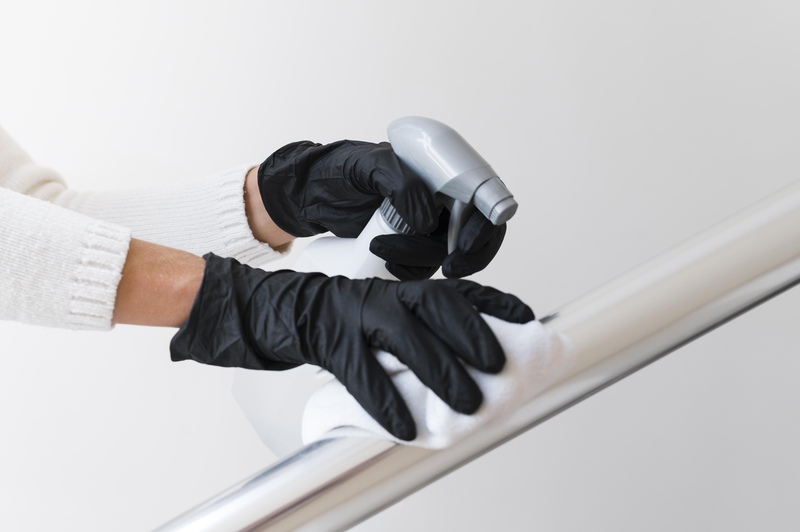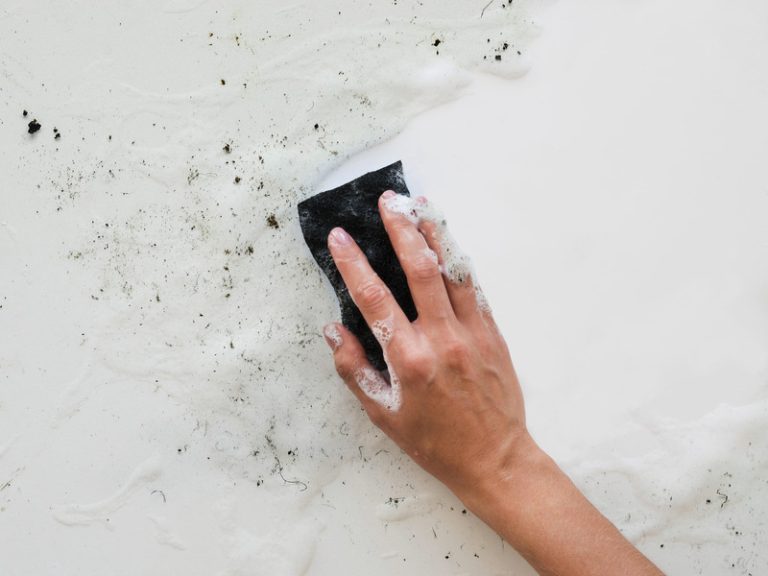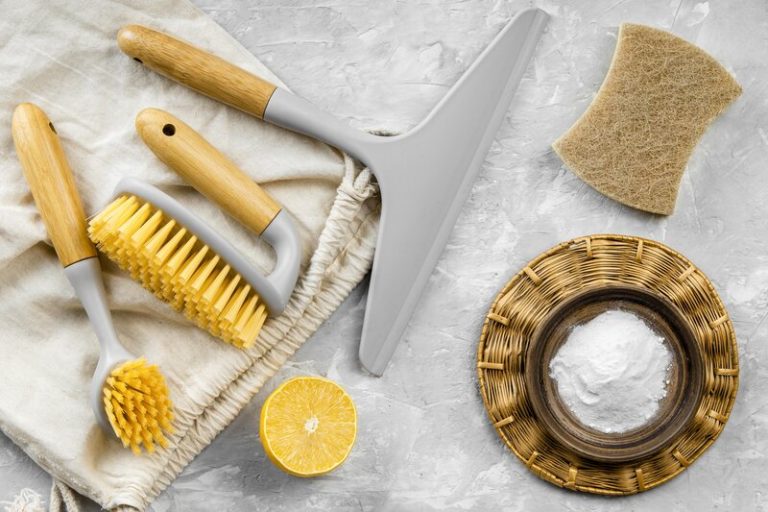Have you ever wondered how to keep your stainless steel looking shiny and clean? If yes, it’s time to know how to clean stainless steel.
In this article, we will explore how to clean stainless steel, the importance of cleaning stainless steel, common mistakes to avoid, tools and materials required for cleaning, as well as tips on maintaining the gloss of stainless steel surfaces.
Whether you are dealing with appliances, sinks, cookware, or countertops, we’ve got you covered with the best ways to keep your stainless steel looking its best.
What is Stainless Steel?
Without further ado on how to clean stainless steel, let’s first understand its definition. Stainless steel is a versatile and durable material commonly used in various applications due to its resistance to corrosion and staining. It is a type of steel alloy containing chromium which provides the characteristic shine and protection against rusting.
One of the remarkable properties of stainless steel is its ability to maintain its lustrous appearance even after prolonged exposure to harsh conditions. The high chromium content in stainless steel plays a crucial role in forming a protective oxide layer on the surface, which further enhances its resistance to corrosion. Stainless steel is known for its strength, making it a reliable choice for structural applications like building construction and bridges. Its hygienic properties also make it a preferred material in the food and pharmaceutical industries.
The Importance of Cleaning Stainless Steel
Cleaning stainless steel is crucial to maintain its appearance, prevent corrosion, and extend its lifespan. Proper cleaning helps retain the shine and lustre of stainless steel surfaces, keeping them looking new and free from stains or discolouration.
Regular cleaning not only enhances the visual appeal of stainless steel items but also serves as a protective measure against rust and deterioration. By removing dirt, grime, and grease regularly, you can prevent the build-up of damaging substances that can compromise the integrity of the metal.
Moreover, cleaning stainless steel on a consistent basis ensures that any acidic or corrosive residues, like vinegar or lemon juice, are promptly removed. This proactive approach helps safeguard the material, preventing potential damage and maintaining its durability over time.
Common Mistakes When Cleaning Stainless Steel
When cleaning stainless steel, there are common mistakes that should be avoided to prevent damage and maintain the quality of the material. These mistakes include the use of abrasive cleaners, steel wool or wire brushes, chlorine-based cleaners, and inadequate rinsing after cleaning.
Abrasive cleaners can cause scratches and dull the finish of stainless steel surfaces, compromising their appearance and durability over time. Instead, opt for gentle cleaners like mild soapy water or specific stainless steel cleaning solutions that are non-abrasive. Steel wool or wire brushes can leave behind microscopic scratches, making the surface prone to rust and corrosion.
a. Using Abrasive Cleaners
One common mistake when cleaning stainless steel is the use of abrasive cleaners, which can scratch the surface and diminish the shine of the material. Instead, opt for gentler cleaning solutions that are specifically formulated for stainless steel.
These harsh abrasive cleaners typically contain rough particles or chemicals that can be too harsh for stainless steel surfaces. Over time, the abrasive nature of these cleaners can cause damage, leading to visible scratches and a dull appearance on your stainless steel appliances or fixtures. To preserve the integrity and beauty of your stainless steel items, it’s advisable to choose cleaning products that are non-abrasive and designed to clean stainless steel effectively without causing any harm.
b. Using Steel Wool or Wire Brushes
Another mistake to avoid is using steel wool or wire brushes on stainless steel surfaces, as these can leave scratches and damage the protective layer of the material. Instead, choose soft cleaning tools to maintain the integrity of the stainless steel.
Steel wool and wire brushes, although seemingly robust, can actually pose significant risks when used on stainless steel surfaces. These abrasive materials can not only create unsightly marks but also compromise the protective coating, leaving the steel susceptible to corrosion and staining. To prevent such damage, opt for gentler cleaning alternatives such as microfibre cloths, non-abrasive sponges, or specialised stainless steel cleaners.
By embracing a more delicate approach to cleaning, you can ensure that your stainless steel surfaces retain their sleek appearance and durability. Remember, maintaining the proper care routine for stainless steel will ultimately prolong its lifespan and keep it looking pristine for years to come.
c. Using Chlorine-based Cleaners
Using chlorine-based cleaners on stainless steel can cause discolouration and corrosion due to the harsh chemicals present in these cleaners. It is advisable to avoid such cleaners and opt for milder, stainless steel-safe alternatives.
Chlorine-based cleaners, while effective in tackling tough stains, can inadvertently damage the protective layer of stainless steel surfaces, making them more vulnerable to rust and dullness over time.
Harsh chemicals in these cleaners penetrate the surface of stainless steel, leading to irreversible harm that may compromise the integrity of your appliances or fixtures.
To maintain the sleek look of stainless steel, it’s best to utilise gentler options like vinegar, mild dish soap, or specially formulated stainless steel cleaners. These alternatives offer a safe and efficient way to keep your stainless steel shining without risking its longevity or appearance.
d. Not Rinsing Thoroughly
In complete rinsing after cleaning stainless steel can leave residues of cleaning agents that may cause streaks or spots on the surface. It is essential to rinse stainless steel thoroughly with clean water and dry it properly to maintain its appearance.
Proper rinsing in stainless steel cleaning plays a crucial role in ensuring a spotless and shiny finish. When cleaning agents are not completely rinsed off, they can react with the steel surface, leading to discolouration or corrosion over time. To achieve optimal results, experts recommend using warm water and a soft cloth or sponge to rinse off any remaining cleaner residue.
- Make sure to rinse all areas, including corners and crevices, to prevent buildup.
- After rinsing, use a separate clean cloth to dry the stainless steel thoroughly to avoid water spots.
Thorough rinsing not only enhances the aesthetic appeal of stainless steel surfaces but also prolongs their longevity by preventing damage from residual chemicals.
How to Clean Stainless Steel with Recommended Methods
To clean stainless steel effectively, recommended methods include using mild detergent and warm water, vinegar and water solution, baking soda and water paste, and commercial stainless steel cleaners. Each method offers a different approach to cleaning based on the level of dirt and stains present.
Using a mild detergent and warm water solution is a gentle yet effective way to remove fingerprints and general grime from stainless steel surfaces without causing any damage. The vinegar and water mixture is perfect for tackling tougher spots and streaks while providing a natural and eco-friendly cleaning solution. For more stubborn stains, creating a paste with baking soda and water allows for targeted scrubbing without scratching the metal. Commercial stainless steel cleaners offer convenience for quick and efficient cleaning, ideal for busy households or commercial settings.
a. Using Mild Detergent and Warm Water
One effective cleaning method for stainless steel involves using mild detergent and warm water to remove dirt and grime without damaging the material. This gentle approach helps maintain the shine and cleanliness of stainless steel surfaces.
By opting for a mild detergent, you ensure that the cleaning solution is gentle on the stainless steel, preventing any potential scratching or dulling of the surface. Warm water aids in loosening dirt and grease, making it easier to wipe away without vigorous scrubbing.
This approach is eco-friendly as it avoids harsh chemicals that can be harmful to the environment and your health, promoting a safer cleaning process overall. Remember to dry the stainless steel thoroughly after cleaning to prevent water spots or streaks from forming.
b. Using Vinegar and Water Solution
An alternative cleaning method involves using a vinegar and water solution to tackle tougher stains and spots on stainless steel. The acidic properties of vinegar help dissolve deposits and restore the shine of the material.
Preparing this natural cleaning solution is simple and cost-effective. All you need to do is mix equal parts of water and vinegar in a spray bottle. Then, spray the solution onto the stainless steel surface and let it sit for a few minutes to break down the grime and dirt. After that, wipe it off with a clean cloth or microfiber towel.
One of the major benefits of using a vinegar and water solution for stainless steel cleaning is its eco-friendly nature. Unlike harsh chemical cleaners, this method is safe for the environment, your health, and the material itself. Vinegar acts as a natural disinfectant, killing germs and bacteria while leaving a streak-free finish on your stainless steel appliances and surfaces.
c. Using Baking Soda and Water Paste
For stubborn stains and greasy residues on stainless steel, creating a baking soda and water paste can be an effective cleaning solution. The mild abrasive nature of baking soda helps lift tough stains without scratching the surface.
When mixed with water, baking soda forms a paste that can adhere to the surface of the stainless steel, allowing it to work its magic on the stains. This paste not only helps in removing grime and spots but also neutralises odours, leaving the stainless steel surfaces fresh and clean. One of the greatest advantages of using this paste is its non-toxic and environmentally friendly nature, making it a safe choice for cleaning in homes with children or pets. This natural cleaning solution is budget-friendly and easily accessible for all your household cleaning needs.
d. Using Commercial Stainless Steel Cleaners
Commercial stainless steel cleaners are specially formulated products designed to clean and protect stainless steel surfaces. These cleaners offer convenience and effectiveness in removing tough stains and maintaining the shine of stainless steel.
One of the main advantages of using commercial stainless steel cleaners is their ability to provide a streak-free finish, leaving surfaces looking polished and professional. These cleaners also form a protective barrier against fingerprints, smudges, and water spots, helping to maintain the pristine appearance of stainless steel over time.
Popular brands like Bar Keepers Friend Soft Cleanser, Weiman Stainless Steel Cleaner & Polish, and Therapy Premium Stainless Steel Cleaner & Polish are highly recommended for their superior cleaning power and easy application. Whether it’s for kitchen appliances, sinks, or outdoor grills, these products offer versatility and efficiency in keeping stainless steel surfaces spotless.
When applying commercial stainless steel cleaners, it’s important to follow the manufacturer’s instructions for the best results. Generally, a small amount of the cleaner is applied to a soft cloth or sponge, and then rubbed onto the surface in a gentle circular motion. After allowing it to sit for a few minutes, the cleaner can be wiped off with a clean, damp cloth, followed by a dry cloth to buff the surface to a sparkling shine.
Tools and Materials are Needed for Cleaning Stainless Steel
To effectively clean stainless steel, you will need specific tools and materials, including a soft cloth or sponge, microfibre cloth, soft-bristled brush, white vinegar, bicarbonate of soda, mild detergent, and commercial stainless steel cleaner. Each item serves a different purpose in the cleaning process.
- The soft cloth or sponge is essential for wiping down the surface to remove any loose dirt or debris without scratching the stainless steel.
- A microfibre cloth is great for buffing and shining the steel after cleaning.
- The soft-bristled brush helps to reach into crevices or grooves where dirt may accumulate.
- White vinegar serves as a natural cleaning agent that can dissolve grease and sanitise surfaces effectively.
- Bicarbonate of soda acts as both a mild abrasive and deodoriser, perfect for tougher stains.
- A mild detergent is gentle enough to clean without damaging the stainless steel finish.
- A commercial stainless steel cleaner is formulated specifically for stainless steel surfaces, offering enhanced protection and a streak-free shine.
a. Soft Cloth or Sponge
A soft cloth or sponge is ideal for gentle cleaning of stainless steel surfaces without causing scratches. It helps in applying cleaning solutions and wiping off dirt and grime effectively.
When choosing a cloth or sponge for cleaning stainless steel, opt for materials like microfiber or soft cotton to ensure a scratch-free surface. These materials are gentle yet effective at removing fingerprints, smudges, and spills.
Gentle cleaning techniques prevent dulling or damaging the stainless steel finish, helping to maintain its sleek appearance and longevity over time. Remember to always wipe in the direction of the grain to avoid streaks and achieve a polished look.
b. Microfiber Cloth
A microfibre cloth is excellent for polishing and buffing stainless steel surfaces to achieve a streak-free and shiny finish. Its soft texture helps in removing residues and enhancing the overall appearance of the material.
One of the key advantages of using a microfibre cloth for cleaning stainless steel is its ability to attract and trap dust and dirt particles effectively. This means that when you wipe down your stainless steel surfaces with a microfibre cloth, you’re not just moving the dirt around, but actually picking it up and holding onto it. This results in a more thorough and efficient cleaning process.
c. Soft-bristled Brush
A soft-bristled brush is useful for cleaning hard-to-reach areas and removing debris from textured stainless steel surfaces. It allows for thorough cleaning without causing damage to the material.
The gentle nature of a soft-bristled brush ensures that intricate designs and delicate etchings on stainless steel remain unharmed during the cleaning process. This makes it an ideal tool for maintaining the pristine appearance of decorative stainless steel elements in kitchens, bathrooms, and other areas prone to grime buildup.
d. White Vinegar
White vinegar is a versatile cleaning agent that helps dissolve stains and deposits on stainless steel surfaces. Its acidic properties make it effective in restoring the shine and removing mineral buildup.
White vinegar is a cost-effective and eco-friendly alternative to harsh chemical cleaners commonly used on stainless steel. It is gentle on the environment and safe for household use, making it an ideal choice for those looking for a natural cleaning solution.
The versatility of white vinegar extends beyond surface cleaning—it can also effectively tackle tough stains like grease and fingerprints.
By using a simple mixture of white vinegar and water in a spray bottle, you can effortlessly clean and maintain the appearance of your stainless steel appliances and fixtures.
e. Baking Soda
Baking soda is an ideal choice for cleaning stainless steel due to its gentle yet effective properties.
Its mild abrasive nature allows it to remove dirt and stains without scratching the metal surface. Additionally, baking soda’s neutral pH ensures it won’t cause corrosion or discolouration to the stainless steel. It excels at cutting through grease and oil, making it particularly useful for kitchen appliances and surfaces.
Baking soda’s versatility allows it to be easily mixed with water to create a cleaning paste, providing a simple and efficient solution for maintaining the shine and cleanliness of stainless steel items.
f. Mild Detergent
Gentle detergent is essential for cleaning stainless steel items with grease or oil residues. It helps in breaking down the grime and dirt without affecting the shine or finish of the material.
When choosing a suitable product, opt for mild formulas that are specifically designed for stainless steel surfaces. These detergents are formulated to be non-abrasive, ensuring that your items remain unharmed during the cleaning process.
By using gentle detergent, you can effectively eliminate stubborn stains and fingerprints from stainless steel, leaving your items looking pristine and sparkling. The gentle yet powerful action of the detergent helps to loosen tough residues, making it easier to wipe them away without damaging the surface.
g. Commercial Stainless Steel Cleaner
Commercial stainless steel cleaners are specially formulated products designed to clean and protect stainless steel surfaces. These cleaners offer convenience and effectiveness in removing tough stains and maintaining the shine of stainless steel.
One of the advantages of using commercial stainless steel cleaners is their ability to provide a protective coating that helps prevent future stains and fingerprints, keeping the surface looking pristine. Popular products in this category include Bar Keepers Friend Soft Cleanser, renowned for its gentle yet powerful cleaning abilities, and Weiman Stainless Steel Cleaner and Polish, known for its streak-free formula that leaves a brilliant shine. To apply these products, simply dab a small amount onto a soft cloth and wipe along the grain of the stainless steel for best results.
How to Clean Stainless Steel in Different Types
Cleaning various stainless steel surfaces requires specific techniques tailored to the type of item being cleaned. Whether it’s stainless steel appliances, sinks, cookware, or worktops, knowing the appropriate cleaning method for each surface is essential to maintain their quality and appearance.
Stainless steel surfaces come in various finishes, including brushed, satin, and mirror-like polished surfaces. Each finish requires different care to keep them looking their best. For appliances, a gentle cleanser or a mixture of mild soap and water works well to remove fingerprints and smudges without causing damage. Sinks, on the other hand, may benefit from a paste of bicarbonate of soda and water to tackle tough stains and mineral deposits without scratching the surface.
Cookware, such as pots and pans, often needs special attention to prevent discolouration. A mixture of white vinegar and water can help remove stains and restore shine. Regarding worktops, a microfiber cloth and a solution of water and dish soap are usually sufficient for everyday cleaning, while avoiding abrasive cleaners that can scratch the surface.
a. Cleaning Stainless Steel Appliances
Stainless steel appliances require regular cleaning to remove fingerprints, smudges, and grease build-up. Using the right cleaning methods and products can help restore the shine and cleanliness of appliances without causing damage to the surface.
Regarding keeping your stainless steel appliances looking their best, a soft cloth or sponge and warm, soapy water are your best friends. Start by dampening the cloth or sponge with the soapy solution and gently wipe down the surface of the appliance, following the grain of the steel to prevent streaking. For tougher stains or grease residue, a mixture of water and vinegar can be effective in breaking down the grime.
Avoid abrasive cleaners or steel wool pads as they can scratch the surface of stainless steel, leading to permanent damage. To maintain the shine, finish off the cleaning process by drying the appliance with a clean, soft cloth to prevent water spots and streaks.
b. Cleaning Stainless Steel Sinks
Stainless steel sinks are prone to water spots, soap scum, and stains that require regular cleaning to maintain their appearance. Using gentle cleaning agents and techniques can help keep stainless steel sinks clean and free from discolouration.
One common challenge with stainless steel sinks is that they often show water spots easily, which can make them look dull and dirty. Soap scum buildup can also be frustrating to remove, especially if left unchecked. Stains, whether from hard water deposits or food residue, can be difficult to deal with if not tackled promptly.
To effectively clean stainless steel sinks, it is recommended to avoid harsh abrasives that can scratch the surface. A solution of warm water and mild dish soap can work wonders in breaking down grease and grime without damaging the steel. Vinegar can be a valuable ally in removing water spots and adding shine to the sink.
- Regular maintenance is key to preventing tough stains and spots from forming. Wiping down the sink after each use and drying it thoroughly can help maintain its lustre.
- For tougher stains, a paste made of baking soda and water can be applied to the affected areas and gently scrubbed with a soft cloth.
- Consider investing in a stainless steel sink protector or mat to reduce the risk of scratches from pots and pans.
c. Cleaning Stainless Steel Cookware
Cleaning stainless steel cookware involves removing burnt-on food residues and stains without damaging the cooking surface. Using gentle cleaning techniques and avoiding abrasive tools can help preserve the quality and longevity of stainless steel pots and pans.
One effective method for cleaning stainless steel cookware is to soak the pans in warm, soapy water before scrubbing them with a soft sponge or cloth. A mixture of vinegar and water can be used as a natural cleaning solution to tackle tough stains and discolouration.
Regular maintenance is key to preventing build-up and keeping your cookware looking its best. Drying the pots and pans immediately after washing can prevent water spots and maintain their shine for longer periods.
d. Cleaning Stainless Steel Countertops
Stainless steel countertops require regular cleaning to remove spills, fingerprints, and stains that can detract from their appearance. Using non-abrasive cleaning agents and polishing the surface can help maintain the shine and hygiene of stainless steel countertops.
When cleaning your stainless steel countertops, start by wiping down the surface with a damp cloth or sponge to remove any loose debris. For tougher stains, consider using a mild dish soap diluted in warm water to gently scrub the area.
It is crucial to avoid harsh chemicals or abrasive tools that can scratch or damage the stainless steel surface. Always remember to dry the countertops thoroughly after cleaning to prevent water spots and maintain the lustre.
To preserve the aesthetics, consider applying a stainless steel cleaner or polish specifically formulated for this material. These products not only clean but also protect the surface from future stains and fingerprint marks.
Tips for Maintaining the Shine of Stainless Steel
To keep stainless steel surfaces looking their best, follow these maintenance tips:
- wipe regularly with a microfibre cloth
- avoid strong cleaners
- dry thoroughly after cleaning
- use buffering agents like olive oil for shine
- address stains promptly to prevent lasting damage
Wiping stainless steel with a microfibre cloth helps remove dust and smudges without scratching the surface, maintaining its sleek appearance. Avoiding strong cleaners is crucial as they can cause corrosion and dullness over time, affecting the stainless steel’s longevity and shine.
Drying the surface thoroughly after cleaning prevents water spots and streaks, preserving its mirror-like finish. Using olive oil as a buffering agent not only adds a glossy sheen but also creates a protective barrier against fingerprints and smudges.
Addressing stains promptly is essential to prevent them from becoming permanent, as untreated stains can penetrate the steel’s surface and compromise its integrity, leading to discolouration and pitting.
Well, that’s a complete discussion of how to clean stainless steel, including an explanation of why it’s important, to the recommended tools and methods.
From the above explanation, it can also be concluded that cleaning stainless steel is not just about maintaining its appearance, it’s also crucial for preserving its durability and preventing corrosion.
Whether it’s your kitchen appliances, sink, or outdoor fixtures, stainless steel surfaces can accumulate fingerprints, grease, and stains over time, detracting from their aesthetic appeal. Proper cleaning not only restores their shine but also extends their lifespan, ensuring they remain in top condition for years to come.
That’s where professional cleaning services from TEKA Cleaning come in. Our team of experienced cleaners understands the nuances of cleaning stainless steel, ensuring that your surfaces are not only clean but also protected from damage.
With our expertise and attention to detail, you can trust us to restore the shine to your stainless steel and keep it looking like new for years to come.
So why wait? Book now or give us a call on 01233 751 544 to schedule your house cleaning service with TEKA Cleaning.
Let us take the hassle out of cleaning and restore the beauty of your stainless steel surfaces with our professional expertise. With TEKA Cleaning, you can enjoy peace of mind knowing that your stainless steel is in capable hands.
Read also:











